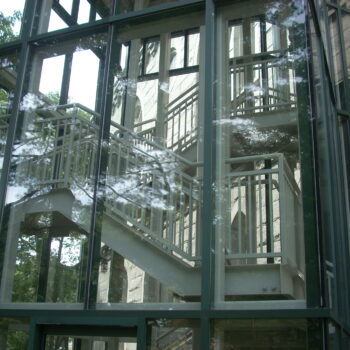
Salus Health Care Forum: February 2025
Bill B
Warren, you have made several very important points. Let me come in as a non-physician. A couple of things. I headed a large national program with American colleges that involved regional collaboratives. So, it’s wonderful to hear what you’re doing. And I think there are three major themes that I want to bring up and see if they fit with you. These themes came up with us, and it sounds like they may have come up with you as teachable moments.
The first is the notion of catching people early. You were working with the residents. These young physicians are amenable to some of the early material they get, new early ideas. Their concepts of healthcare are still being formed They’re still open-minded.
A colleague of mine, Nevitt Sanford, talked about those moments where there’s challenge but also support. Somehow between challenge and support is the threshold (not too high or too low a level of challenge). I would say that’s the flow experience. So, these young physicians are challenged, they’re new to this, but also around them are people who provide support and safety.
Second, several of you brought up the matter that they’re interactive. The teachable moments are those where we’re interacting with other folks. There’s something about those interactions (and it involves all sorts of reasons) that are very powerful. You have people interacting, including interacting in the car.
That’s what we found too. Some of the most important learning occurred for them with their own team when they were coming to the event. Jack, you were saying that on our own thing, we’ve been there, we don’t change. Actually, a lot of times they’ve never spent a lot of time with other members of their team. They haven’t had that cup of coffee or that glass of wine with team members, and they begin to find that they actually have interesting and differing ideas. And then they got to drive back home. Do you stay silent, or do you keep talking?
Third. I think we are talking about something called the Medici effect, the power of the intersection between different disciplines and practices. Warren, I would assume what occurs is that people are bouncing up against people who come from very different practice areas, different areas, and those intersections become the power for innovation. Or as Jeremy and I write about, it’s in these slippages, these cracks in the system where it doesn’t fit into one nice little tidy place. That’s where a lot of innovation occurs. So, this reminds me of some of the teachable moments we found when engaged in higher education regional collaboratives. It sounds like you’re doing an exceptional job in bringing about teachable moments.
Warren
It’s very interesting. I’ll make a couple of observations. First, I want to agree completely regarding the importance of working with young people. There are a lot of faculty across the United States who had experience with I3. They were involved in I3 as residents—like Kyle Knierim in your shop, Jack. He is one of those young residents.
Second, I don’t think you do any teaching that is butts in your seat, passive learning. It’s all got to be interactive, and it’s got to be creative. It’s always got to change things.
Third, there’s another advantage of regional as opposed to national. In addition to the logistics and the price of logistics is that you can bring in local actors. We said, all right, we need to get DIOs in the game. So, we had a council of DIOs, and we asked: Where are we going with residency education? And we got payers in as well. We asked: Where do you want to go with respect to quality? I guess you might call that intersectoral or something like that, but we were helping our agenda. We were also pushing our agenda. We were suggesting that family medicine can be an answer to your solution. We then later added a patient council. So, it was a platform that allowed us to make various other connections that were really helpful.
- Posted by Bill Bergquist
- On March 29, 2025
- 0 Comment



Leave Reply